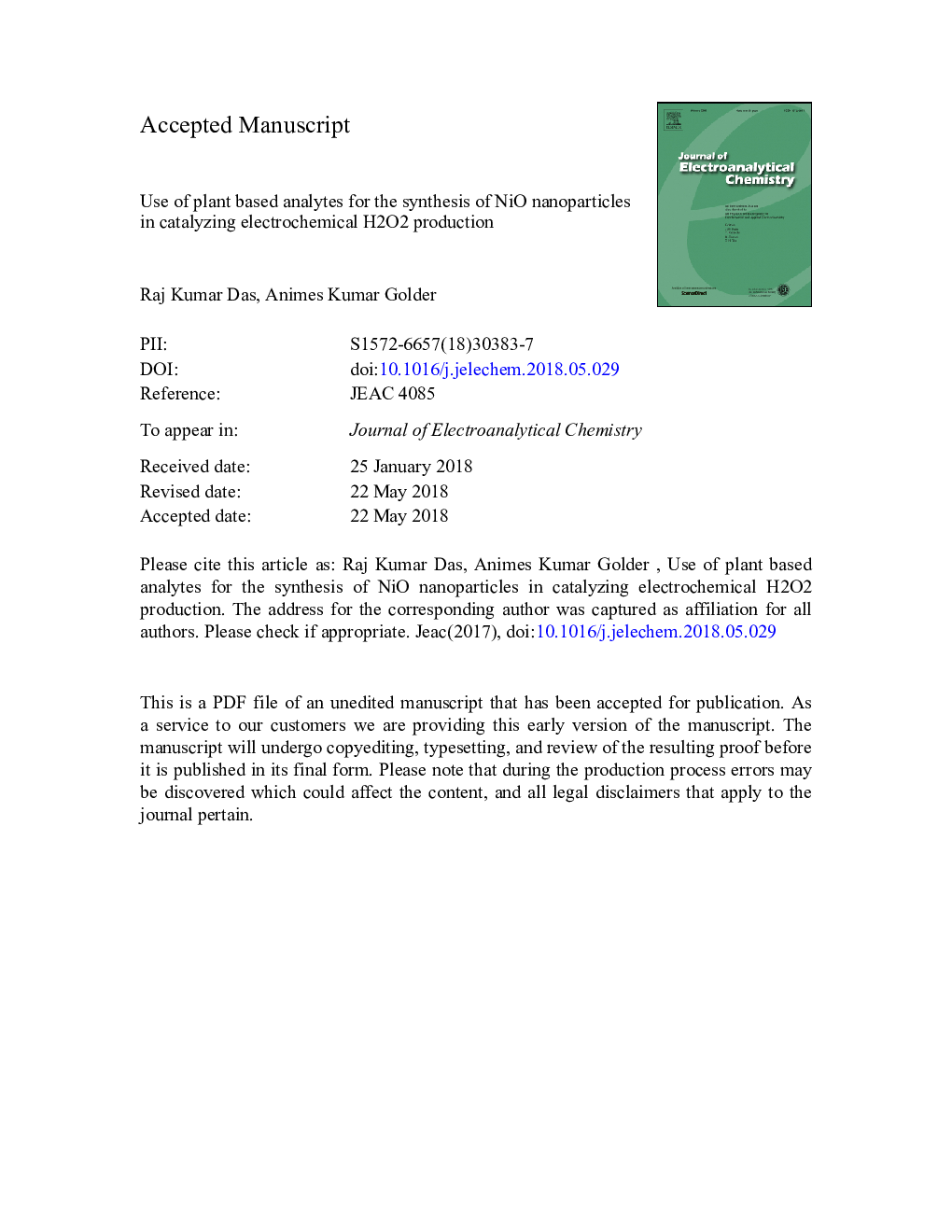| Article ID | Journal | Published Year | Pages | File Type |
|---|---|---|---|---|
| 6661542 | Journal of Electroanalytical Chemistry | 2018 | 37 Pages |
Abstract
The characterizations of NiO NPs were performed for its structural, functional, thermal, and morphological attributes. Ni(OH)2 was formed at a higher pH by the ligand exchange between AAâ and OHâ which was completely converted to NiO NPs after the calcination (500â¯Â°C for 2â¯h) as supported by the mass spectra of analytes and control-experiment. The synthesized NiO NPs were immobilized on the graphite surface and tested for its electrocatalytic activity for the production of H2O2 in an acidic pH (1.5â¯â¤â¯pHâ¯â¤â¯4.5, 0.5â¯M Na2SO4 and O2 flow rate 1.0â¯LPM). From the cyclic voltammetric tests (vs. Ag/AgCl), it was found that O2 reduction took place at a low overpotential (0.125â¯V) which was independent on the solution pH, but the cell current was diminishing beyond the optimal pH of 2.5.There was a remarkable increase in the cell current (3.5 times) and current efficiency (61% higher) of H2O2 formation with graphite/NiO NPs cathode than the bare graphite and, the current efficiency didn't decrease (5-7%) much during electrolysis. The limiting current density (1.42â¯A/m2) was independent on the surface area of graphite/NiO NPs cathodes and, the mass transfer coefficient (km) and thickness (δ) of O2 diffusion layer were 0.955â¯Ãâ¯10â5â¯m/s and 209â¯Î¼m, respectively.
Related Topics
Physical Sciences and Engineering
Chemical Engineering
Chemical Engineering (General)
Authors
Raj Kumar Das, Animes Kumar Golder,
